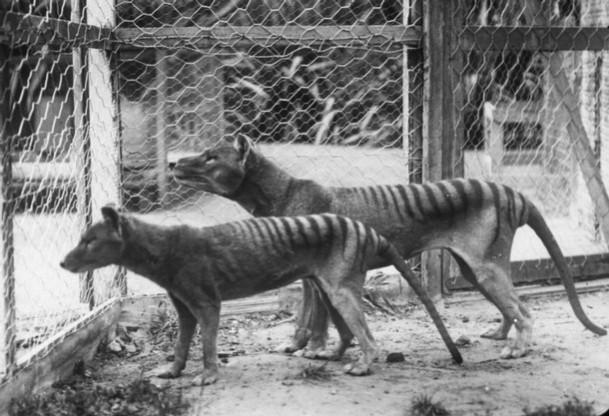
Australia's Tasmanian tiger has been extinct for more than 80 years, but scientists believe that they can bring the mammal back to life.
They have used 3D scans to reconstruct its development through its early life by using preserved specimens of the species. They weren't like other marsupials like the kangaroos or the Wallabies, scientists believe that the link of the tigers with the canines could lead to a major breakthrough and might bring the extinct mammal back to life.
New scans revealed that the canine attributes of the animal appear once they're young known as joeys.
The scans could help in knowing the genetic mysteries of the creatures, which will, in turn, help the scientists to clone them and bring them back from extinction.
Scientists at the University of Melbourne in Australia scanned 13 juvenile Tasmanian tigers that they collected from museums all around the world, varying in age from 1.5 weeks old to 12 weeks old, Express.co.uk reported.
They used CT scan to look under the skin and compiled the X-ray images to create a virtual recreation of the joeys at each stage of their development from all angles.
Andrew Pask, associate professor at the University of Melbourne told the Telegraph: "Bringing back the marsupial could be possible within the next decade," since they have already gathered the details on tiger's growth and development.
Christy Hipsley from Museums Victoria, the lead author of the study that was published in the journal Royal Society Open Science, told the Guardian that the extinct tigers initially looked like any other marsupial who had robust forearms to climb into its mother's pouch.
However, Hipsley added: "By the time it left the pouch around 12 weeks to start an independent life, it looked more like a dog or wolf, with longer hind limbs than forearms."
Its resemblance to a wild dog native to Australia -- dingo, is seen as one of the best examples of 'convergent evolution' in mammals. This is when the two unrelated species evolved to look very similar.
Hipsley said that the team's aim was to "target the genes or the genetic mechanisms that underlie that really specialized morphology."
In other words, they tried to figure out why the extinct tigers look like dogs. Researchers are also examining the genome for signs of convergent evolution. The ultimate goal is to bring back the animal -- a project which they say is technologically distant but theoretically possible.
She said: "As far as we know the Tasmanian tiger is completely gone… But it might be something where we can use another animal's cells as a scaffold and then insert the genome to try and reconstruct the Tasmanian tiger. So definitely, knowing the biology, the development, could help that process."








